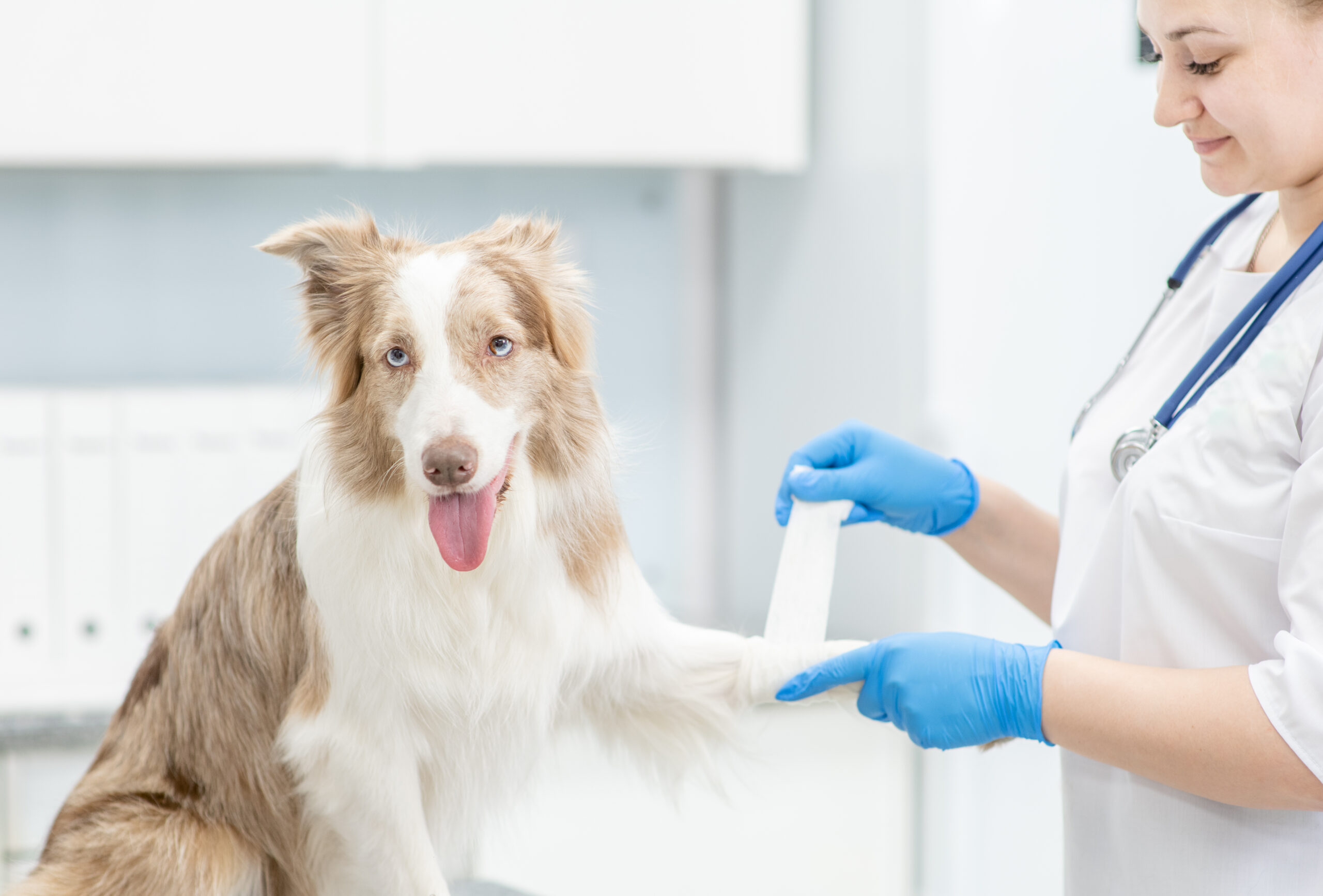Wound care is one of the most common reasons pet owners, equine owners, and those with livestock contact their vets. Surgery also requires wound care around the incision site. Despite how ubiquitous wound care is in the veterinary field, there has been very little innovation in how veterinary professionals treat wounds. That is, until recently. Biologics for wound care and wound healing have become a hot topic in the veterinary medical research world, and those studies have led to biologics that are highly effective and easily implemented in today’s veterinary practices.
If you’re wondering if biologics are right for your practice, this article is written for you. We will dive into what biologics are and how the latest products can be easily integrated into your practice.
What Are Biologics for Veterinary Wound Care?
Simply put, biologics are veterinary medicines that work with an animal’s biological makeup. While biologic medicines may seem like something pulled from a sci-fi movie, they operate on a similar level to skin grafts… just with a bit more chemistry.
More specifically, biologics for wound care use complex compounds that promote rapid healing by working with and activating the body’s natural healing process on a cellular level.
Most biologics replicate natural compounds found in the body, and all biologics have organic origins, they are made from tissues from living donors.
How Do Biologics Compare to Typical Wound Dressing?
Wound dressings are designed to protect the wound from external debris, bacteria, and trauma. Because bandages and other dressings need to be changed, can stick to the wound, and can be difficult to keep in place on an animal patient, there are a wide variety of complications that can lead to infection or other complications. Biologics kickstart the body’s natural healing response, resulting in less delay in the body’s response time and opportunity for infection.
When it comes to large wounds, biologics can make a dramatic difference. These wounds, which typically take a great deal of time, heal quickly with a lower likelihood of secondary health issues such as infection.
However, biologics for topical injuries can be used in conjunction with wound dressings.
How Can You Implement Biologics in Your Practice?
Integrating biological therapies into your practice is simple. You can store your biologics alongside other medications, so you have them on hand. Explaining their benefits is easy since most pet owners want to know all of their options and many will jump at the chance to offer their pet a better prognosis.
Why Are Veterinary Biologics Making an Emergence Now?
Early biologic medications required refrigeration and investment in special equipment for proper application. Today’s products are easier to implement and store.
Hilltop Bio is one company that offers biotherapies that can be stored at room temperature and administered without any special equipment. Their biologics also offer a high level of quality consistently with in-depth donor testing for the best value and best results.
Why Use Biologics for Wound Care in Your Practice?
Biologics have revolutionized the world of human medicine and are doing the same for the veterinary field. These products improve an animal’s quality of life while promoting healing. Furthermore, species with unique physiology, such as horses, don’t have to rely on bandages alone.
Biologics for wounds have additional upsides for veterinary practitioners and clinics, including:
- Establishing a reputation for offering cutting-edge medical innovations
- Offering clients the most effective care
- Providing patients the best quality of life with rapid healing
- Increased profits without the need for bulky equipment
Improve Your Practice with Veterinary Biologics
Don’t miss your opportunity to be a forerunner in the industry by offering your clients the most innovative care. Implementing biologics into your practice is as easy as giving us a call or writing an email. We are happy to share our knowledge and discuss your practice’s unique needs.
Image credit: Ermolaev Alexander /Shutterstock




